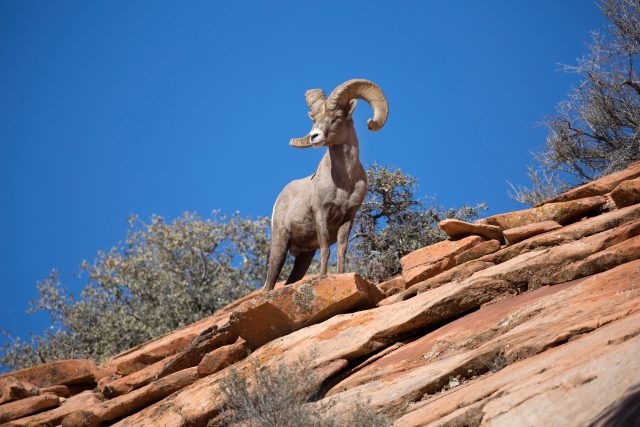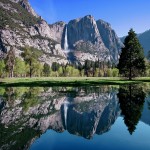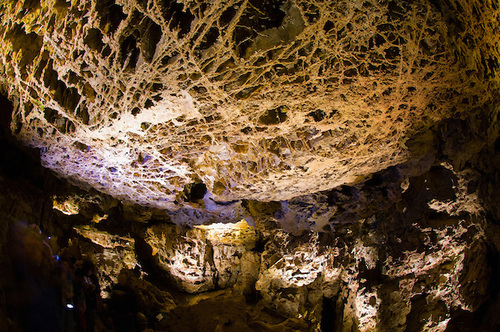An Idaho Republican is asking the right questions about Northwest salmon
by
/ May 14, 2019

The Ice Harbor Dam on the Snake River is seen from the air near Pasco in 2013. There is a renewed push to remove Ice Harbor and three other dams on the Snake River to save wild salmon runs. (Photo by Bob Brawday/The Tri-City Herald via AP)
Advertisement
Despite $16 billion in spending on salmon recovery over the past 30 years, wild stocks of salmon and steelhead in the Columbia-Snake River drainage continue to collapse. An ecosystem that not only sustains other species — like the southern resident orca — but people as well is quickly unraveling.
At a recent conference in Boise, U.S. Rep. Mike Simpson, R-Idaho, accurately summarized the growing peril facing salmon and steelhead runs, as well as the financial challenges confronting the Bonneville Power Administration (BPA), the region’s principal electricity provider.
At a recent conference in Boise, U.S. Rep. Mike Simpson, R-Idaho, accurately summarized the growing peril facing salmon and steelhead runs, as well as the financial challenges confronting the Bonneville Power Administration (BPA), the region’s principal electricity provider.
“There is a looming problem, and it is approaching quicker than anyone might think,” he said. “It is kind of like the side-view mirror on your car: Objects may be closer than they appear.”
He’s right about Bonneville. The agency faces unprecedented pressure from a rapidly changing energy market. As a result, BPA has gone from selling the region’s cheapest electricity to its most expensive. This inversion could very well cause an exodus of customers when their contracts expire in the 2020s.
If this occurs, Bonneville’s ability to maintain and modernize the dams and power lines it owns throughout the Northwest will be compromised.
Simpson is equally right about the region’s salmon and steelhead. The crushing impact of the Lower Snake River dams on wild salmon and steelhead has been evident since the last of the four dams was completed in 1975. Over the past 40 years, runs of tens of thousands of wild fish have declined to thousands and then hundreds and now dozens. Simpson is the first political leader in years — Republican or Democratic — to recognize that dramatic changes need to occur if the extinction of many runs is to be avoided.
The seriousness of Simpson’s observations is underscored by his political record. He is a conservative Republican representing one of the nation’s most conservative states, yet the plight of the Snake River’s salmon and BPA’s finances have moved him to action.
While Simpson made clear he is still researching the best solutions, he also told his Boise audience that time is short for both wild salmon and BPA. In fact, he emphasized that restoring Bonneville to financial health and restoring salmon to healthy populations must go hand in hand. While specifics await the introduction of a bill, it seems likely that his legislation will seek to relieve Bonneville of some of its financial burdens and consider the option that has long paralyzed Northwest politicians — restoring the Lower Snake River by removing four dams that have severed Idaho’s pristine spawning habitat from wild fish. If removing dams is part of the Simpson prescription, so too will be transition funds to aid those who have made good faith investments in the current system, primarily farmers and shippers, and the communities that support them.
He’s right about Bonneville. The agency faces unprecedented pressure from a rapidly changing energy market. As a result, BPA has gone from selling the region’s cheapest electricity to its most expensive. This inversion could very well cause an exodus of customers when their contracts expire in the 2020s.
If this occurs, Bonneville’s ability to maintain and modernize the dams and power lines it owns throughout the Northwest will be compromised.
Simpson is equally right about the region’s salmon and steelhead. The crushing impact of the Lower Snake River dams on wild salmon and steelhead has been evident since the last of the four dams was completed in 1975. Over the past 40 years, runs of tens of thousands of wild fish have declined to thousands and then hundreds and now dozens. Simpson is the first political leader in years — Republican or Democratic — to recognize that dramatic changes need to occur if the extinction of many runs is to be avoided.
The seriousness of Simpson’s observations is underscored by his political record. He is a conservative Republican representing one of the nation’s most conservative states, yet the plight of the Snake River’s salmon and BPA’s finances have moved him to action.
While Simpson made clear he is still researching the best solutions, he also told his Boise audience that time is short for both wild salmon and BPA. In fact, he emphasized that restoring Bonneville to financial health and restoring salmon to healthy populations must go hand in hand. While specifics await the introduction of a bill, it seems likely that his legislation will seek to relieve Bonneville of some of its financial burdens and consider the option that has long paralyzed Northwest politicians — restoring the Lower Snake River by removing four dams that have severed Idaho’s pristine spawning habitat from wild fish. If removing dams is part of the Simpson prescription, so too will be transition funds to aid those who have made good faith investments in the current system, primarily farmers and shippers, and the communities that support them.
The question now is whether Simpson’s leadership will help restore other endangered commodities — bipartisanship and a regional commitment to wild salmon recovery. Moving forward will require much the same cross-aisle collaboration from Northwest Republicans and Democrats that secured the congressional appropriations to build the dams in the first place.
That we can save salmon — and orca — has never been clearer, and Simpson has set the proposition on the table for governors, House members and senators of both parties to consider. As wind and solar generation has grown, the relative importance of the energy produced by the Northwest’s dams has diminished. As energy conservation has taken hold, the energy demands of the region are static even as electric-generating capacity has grown. These are the factors that have destabilized BPA, but they can be addressed even while taking the worst dams — the four Lower Snake dams — off line and restoring wild salmon to the Columbia River basin and the lower Snake River.
Restoring wild salmon and low-cost, clean energy: These are goals that vast majorities of citizens in Washington, Oregon and Idaho want achieved. Working together, across party lines and through the governors’ offices and the region’s congressional delegations, the Northwest can ensure that wild salmon once again are found from the mouth of the Columbia to the cold mountain rivers of Idaho and where low-cost, clean electricity power a dynamic economy.
Restoring wild salmon and low-cost, clean energy: These are goals that vast majorities of citizens in Washington, Oregon and Idaho want achieved. Working together, across party lines and through the governors’ offices and the region’s congressional delegations, the Northwest can ensure that wild salmon once again are found from the mouth of the Columbia to the cold mountain rivers of Idaho and where low-cost, clean electricity power a dynamic economy.
Tom France is the regional executive director of the National Wildlife Federation's Northern Rockies, Prairies, and Pacific Regional Center.









